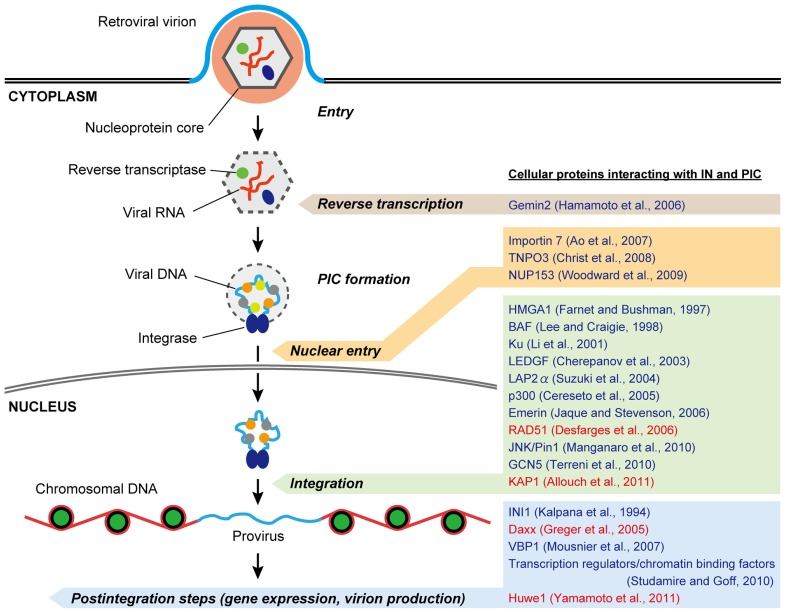FIGURE 2.
Possible roles of IN- and PIC-associated cellular proteins in retrovirus replication. After penetrating the cell membrane, the viral nucleoprotein core containing genomic RNA is released into the cytoplasm, after which reverse transcription of the viral RNA takes place. The synthesis of full-length viral DNA produces the PIC, in which cellular as well as viral proteins including IN are associated. 3′ processing of the viral DNA by IN occurs in the cytoplasmic PIC. Once the PIC reaches the nuclear periphery it must gain entry into the nucleus for integration. Some retroviruses seem to take advantage of nuclear-envelope disassembly during cell division to access chromosomal DNA, whereas the PICs of lentiviruses, including HIV-1, are believed to be capable of crossing the intact nuclear-envelope during interphase. In the nucleus, the PIC gains access to chromosomal DNA and mediates viral DNA integration to produce a provirus, which is acted upon by viral and/or cellular transcription factors to express viral RNAs. To date, a number of host proteins have been reported to interact with the retroviral IN and PIC (representative proteins are listed on the right). Many of them are likely to assist in the integration step, and some other cofactors appear to have functional roles in other steps including reverse transcription, nuclear entry, gene expression, and virion production during virus infection. In addition, recent studies demonstrate that several cellular interactors of IN may negatively regulate retrovirus replication (highlighted in red).

